Type of resources
Available actions
Topics
Keywords
Contact for the resource
Provided by
Years
Formats
Representation types
Update frequencies
status
Scale
-
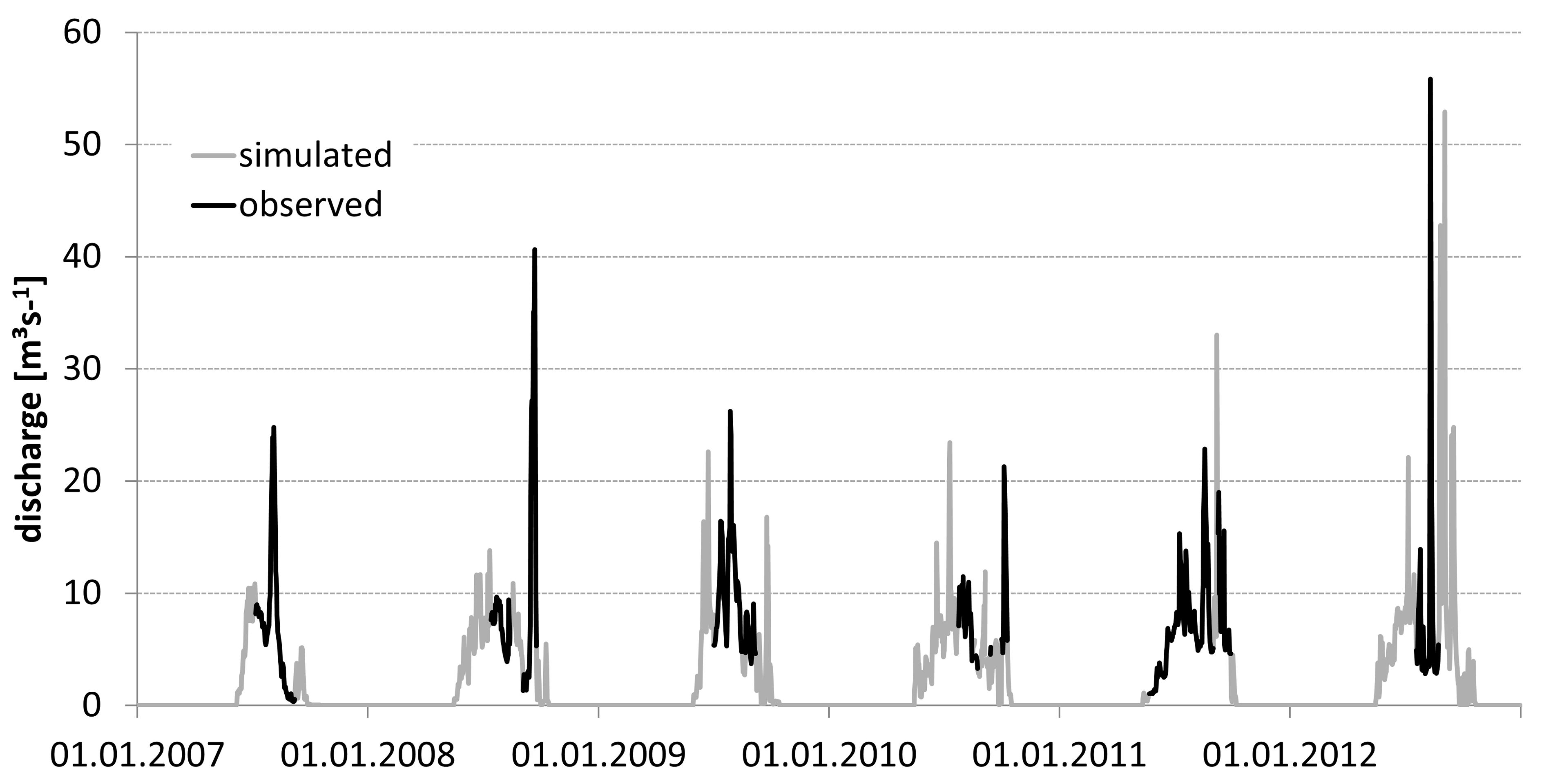
• Discharge measurements were conducted from May/June/July to September/October in the years 2007–2012. Direct observation periods were 62, 51, 61, 40, 121, and 35 days in the consecutive years. The data set was obtained from CTD-DIVER DI 261 or Mini-Diver (Van Essen Instruments, Delft, The Netherlands) logger with barometric compensation by BaroDiver (Schlumberger, Houston, TX, USA) with 10-min intervals and flow velocities were measured with a SEBA F1 current meter (SEBA Hydrometrie GmbH, Kaufbeuren, Germany). Mean daily discharge and total runoff in the hydrologically active season was calculated on the basis of the 24h running average of the water level and a rating curve (Appendix 1). More details have been reported by Majchrowska E., Ignatiuk D., Jania J., Marszałek H., Wąsik M., 2015: Seasonal and interannual variability in runoff from the Werenskioldbreen catchment, Spitsbergen. Polish Polar Research vol. 36, no. 3, pp. 197–224. doi: 10.1515/popore−2015−0014 • Hydrological data for Werenskioldbreen - archive of the University of Silesia. The base contain mean daily discharge in the years: 1972, 1973, 1974, 1979, 1980, 1983, 1985, 1986, 1988, 1998, 2007, 2008, 2009, 2010, 2011, 2012, 2013, 2017 (18 hydrologically active seasons) – Appendix 2
-
The positions of the glacier termini in Hornsund are derived with very high frequency in the period 1991–2018. Over 230 multispectral and Synthetic Aperture Radar (SAR) data were used: LANDSAT 5, LANDSAT 7, LANDSAT 8, Terra ASTER, Alos AVNIR, SPOT 5, ERS-1, ERS-2, ENVISAT, Alos PALSAR, TerraSAR-X, TanDEM-X, and Sentinel-1. SAR data were used to detect any variability in the glacier front during the polar night. The satellite data were digitized manually to obtain the ice cliff position. Multispectral images were orthorectified and geocoded in PCI Geomatica and ArcGIS software. SAR data were usually provided at the SLC level, so that both radiometric and geometric corrections could be applied using the same methods, and with the same digital elevation model (2008 DEM SPOT developed by the IPY-SPIRIT Project; Korona et al., 2009). The SAR data were processed in BEAM (http://www.brockmann-consult.de/cms/web/beam). Sentinel data downloaded from the Sentinel’s Data Hub were already processed. Data not published.
-
Since 2010, continuous monitoring of the front zone of the Hansa Glacier with the use of Canon Eos 1000D photo cameras has been carried out (timelapse). Pictures in different periods of time were taken by 3 different cameras. Two cameras (106 and 107) were located on the Fugleberget slope and one (601) on the Baranowskiodden. The periods for which data are available and the interval of taking pictures are shown in Appendix 1.
-
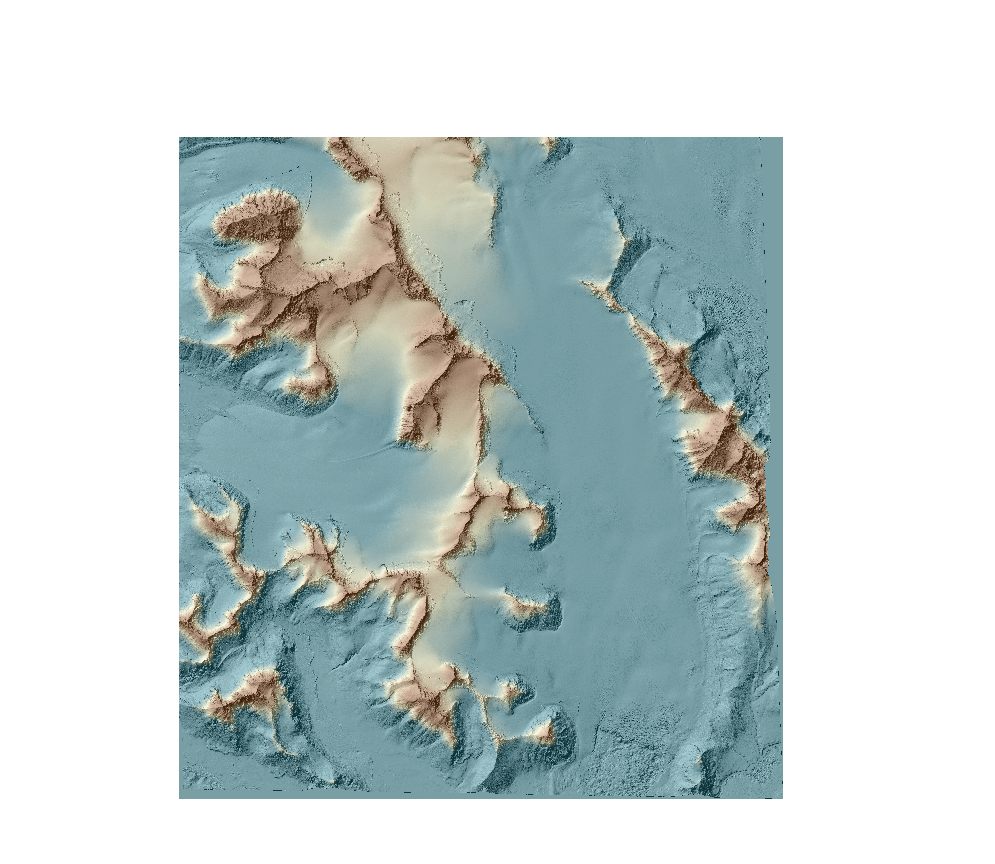
DEMs from WorldView-2 and Pléaides were extracted using the Rational Function Model (RFM). To improve images orientation, one ground control points (GCPs) was used for each stereo pair. Data format: grid (2m), UTM 33X / EGM 2008. DEMs were developed in OrthoEngine module of PCI Geomatica 2016 with the low level of detail and mountainous type of relief.
-
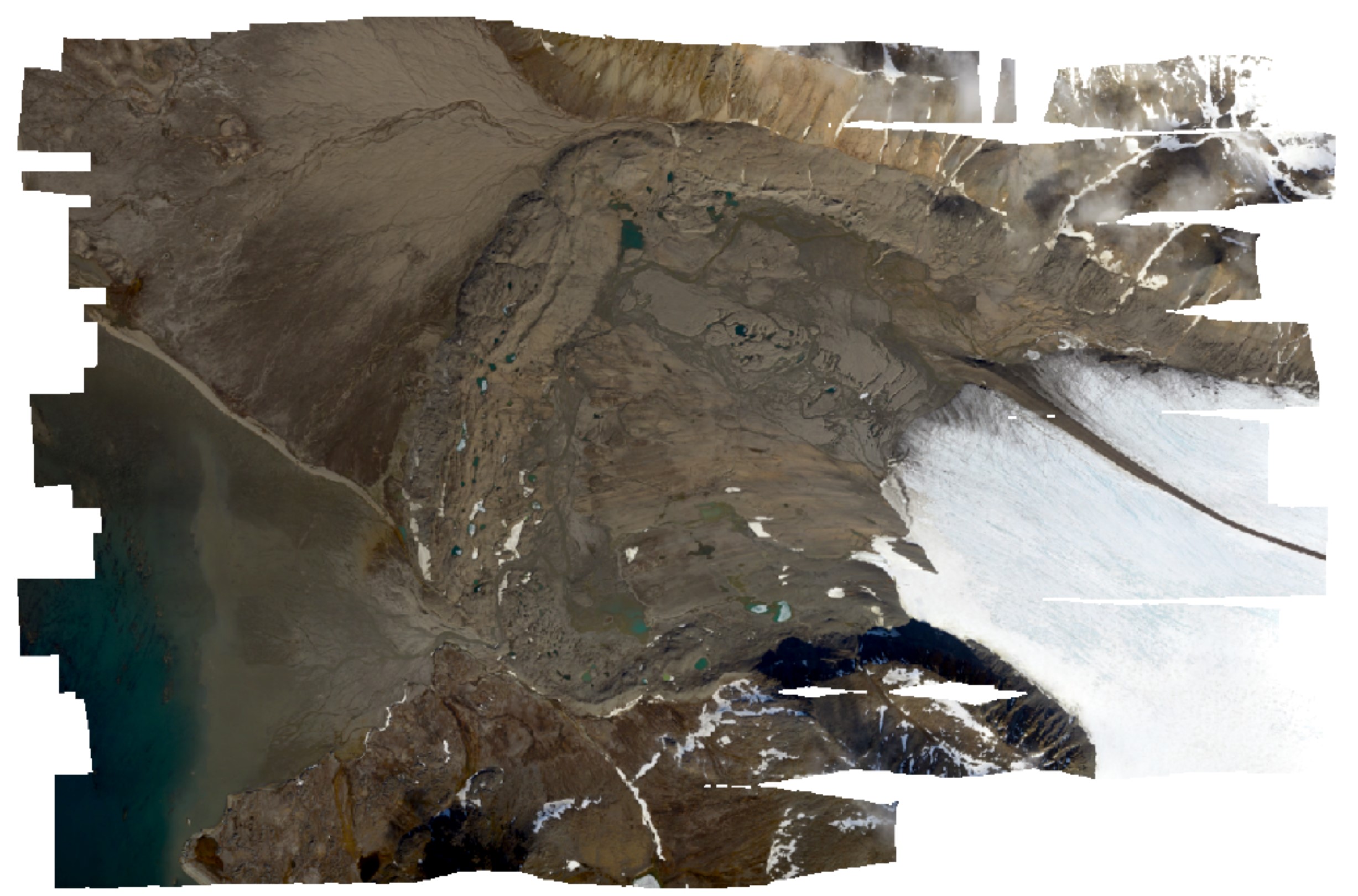
High-resolution orthomosaic derived from aerial images captured in 2020 over Hornsund, Svalbard by Dornier aircraft. The spatial resolution of the orthomosaic is 0.087 m. Aerial images for the area were provided by the SIOS through a dedicated call of proposals (https://sios-svalbard.org/AirborneRS). The dataset is the supplement to the paper: Błaszczyk, M.; Laska, M.; Sivertsen, A.; Jawak, S.D. Combined Use of Aerial Photogrammetry and Terrestrial Laser Scanning for Detecting Geomorphological Changes in Hornsund, Svalbard. Remote Sens. 2022, 14, 601. https://doi.org/10.3390/rs14030601
-
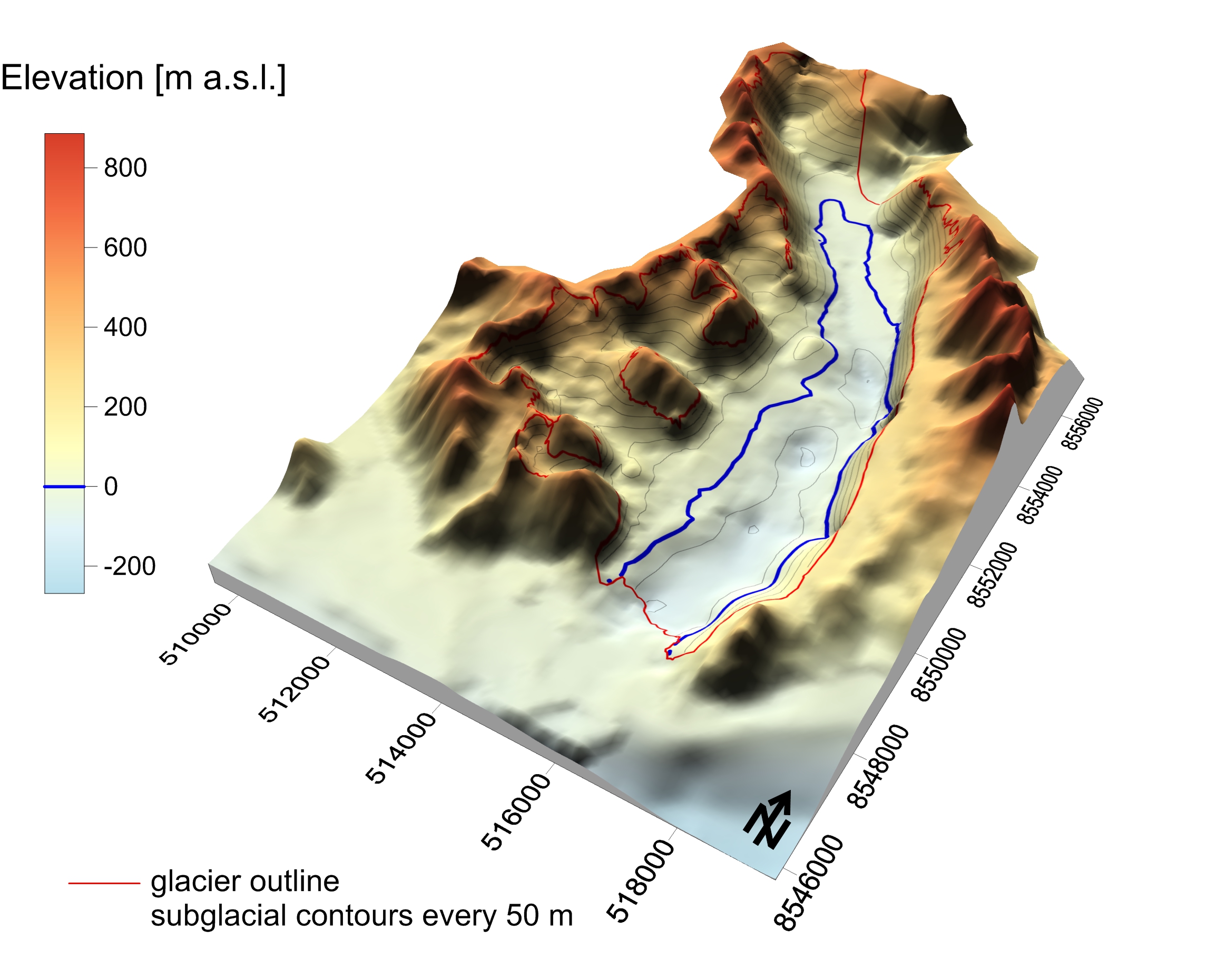
Subglacial topography was derived from radio-echo sounding (RES) survey conducted in spring 2008 by the University of Silesia research team (M. Grabiec and J. Jania) in cooperation with the Institute of Geophysics Polish Academy of Sciences (D. Puczko) and the Maria Curie-Sklodowska University (G.Gajek). The profiles were acquired by the radar system equipped with 25 MHz unshielded antenna pulled behind snowmobile. Traces were recorded every 0.5 s, that translates into 1.5-2.0 trace-to-trace distance depending on the vehicle’s velocity. Traces were positioned by GNSS receiver working in differential mode with 3D accuracy ± 1m. In total over 100 km of RES profiles were acquired on Hansbreen, 66 km on Werenskioldbreen and 43 km on Renardbreen. RES data were processed using standard procedure including: DC-offset, time-zero adjustment, 2-D filter, amplitude correction, bandpass filtering and migration. Time-to-depth conversion applied average radio-wave velocity in glacier ice 16.4 cm ns-1 calculated based on CMP analysis performed on Hansbreen in the same season as the GPR profiling. The ice/bed interface was picked up semi-automatically with RMSE 5.3 ns (0.43 m) (Grabiec, 2017). Then the bedrock elevation data were interpolated over studied glaciers taking into account elevation of nonglaciated surroundings (Grabiec 2017) and bathymetry at the front of tidewater Hansbreen (Grabiec et al. 2012). Finally produced 100 m resolution DEMs are in UTM 33X WGS84 reference system. DEM of 300 m resolution is freely available. For 100 m resolution DEM please contact: mariusz.grabiec@us.edu.pl. The data were collected and processed under following projects: • IPY/269/2006 GLACIODYN The dynamic response of Arctic glaciers to global warming • UE FP7-ENV-2008-1 ice2sea Estimating the future contribution of continental ice to sea-level rise • PNRF-22-AI-1/07 AWAKE Arctic Climate and Environment of the Nordic Seas and the Svalbard – Greenland Area • 03/KNOW2/2014 KNOW Leading National Research Centre Reference: Grabiec M., Jania J., Puczko D., Kolondra L., and Budzik T., 2012: Surface and bed morphology of Hansbreen, a tidewater glacier in Spitsbergen. Polish Polar Research 38(2): 111-138. Grabiec M. 2017: Stan i współczesne zmiany systemów lodowcowych południowego Spitsbergenu w świetle badań metodami radarowymi. Wydawnictwo Uniwersytetu Śląskiego, 328 s. Decaux, L., Grabiec, M., Ignatiuk, D., and Jania, J. 2018: Role of discrete recharge from the supraglacial drainage system for modelling of subglacial conduits pattern of Svalbard polythermal glaciers, The Cryosphere Discuss., https://doi.org/10.5194/tc-2017-219, in review.
-
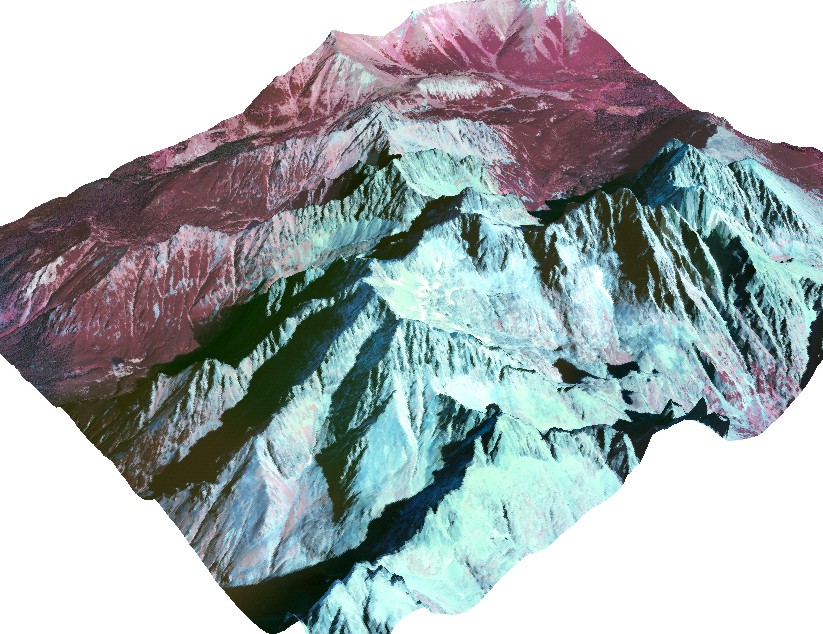
The orthophotomap was prepared on the basis of infrared aerial photographs taken by EUROSENSE in September 1998. The study covers the Dolina Kiezmarskej Bieley vody valley located in the High Tatra Mountains (Slovakia). Cartographic projection: Universal Transverse Mercator, Ellipsoid: WGS 84, Coordinates system: UTM zone 34. The project was financed by No.3P04E 045 23. Editors: Bogdan Gądek, Milan Koren (sen.), Milan Koren (jun.) The project was financed by the Polish Commitee on Scientific Research under term of research grant No. 3P04E 045 23.
-
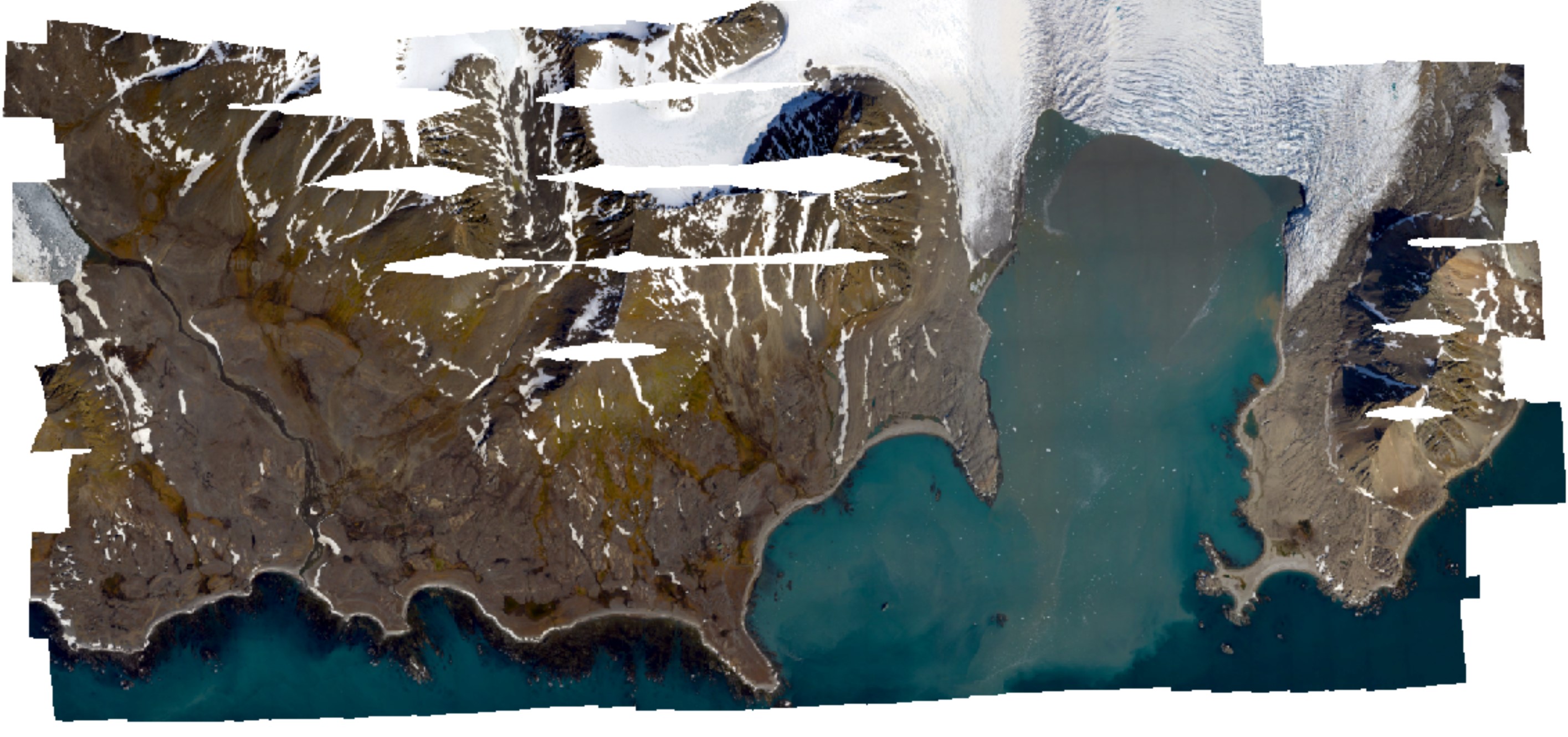
High-resolution orthomosaic derived from aerial images captured in 2020 over Hornsund, Svalbard by Dornier aircraft. The spatial resolution of the orthomosaic is 0.0843 m. Aerial images for the area were provided by the SIOS through a dedicated call of proposals (https://sios-svalbard.org/AirborneRS). The dataset is the supplement to the paper: Błaszczyk, M.; Laska, M.; Sivertsen, A.; Jawak, S.D. Combined Use of Aerial Photogrammetry and Terrestrial Laser Scanning for Detecting Geomorphological Changes in Hornsund, Svalbard. Remote Sens. 2022, 14, 601. https://doi.org/10.3390/rs14030601
-

The internal structure of glaciers evolves primarily due to their thermal state, which is influenced by ongoing climate change. Radio-echo sounding is a technique that indirectly identifies water-saturated temperate ice (W-STI) and water-free ice (W-FI) within glaciers. A novel automatic image processing method based on local binarization has been developed to improve the accuracy and efficiency of identifying these layers. Applied to the Arctic glacier Hansbreen from 2007 to 2021, this technique revealed that the glacier’s internal structure evolved from a two-layer system to a nearly homogeneous structure composed mainly of temperate ice (Kachniarz et al. 2025). The dataset contains raw GPR data from 2007 - 2021 taken in the Hansbreen ablation zone used to identify the glacier's internal structure. The profiles are divided into two sections: upper and lower areas. The upper area includes GPR profiles intended to replicate the 2003 GPR profile. The lower area consists of profiles shifted down the glacier, corresponding to the glacier’s movement since 2003. The profile lengths range from 0.7 km to 1.7 km, with the 2016 lower and 2021 upper areas, respectively. In the first season (2007), the GPR profiles were situated at altitudes between 188 and 216 meters above sea level, running transversely to the glacier’s movement. The glacier’s internal structure was examined using GPR system with unshielded 25 MHz, Rough Terrain Antenna (RTA) 30 MHz, and RTA 50 MHz antennas. Image processing Python script based on local binarization and processed image examples have been included in the dataset. See details in Kachniarz et al. 2025. The field data collection and/or processing received grant aid from: Svalbard Integrated Arctic Earth Observing System (SIOS) (SnowInOpt: SIOS Infrastructure Optimisation of the Cal/Val process for the snow research), European Commission Horizon Europe HORIZON-CL5-2024-D1-01-02 (LIQUIDICE: LinkIng and QUantifying the Impacts of climate change on inlanD ICE, snow cover, and permafrost on water resources and society in vulnerable regions) 101184962, the National Centre for Research and Development within the Polish-Norwegian Research Cooperation Programme (AWAKE2 project Pol Nor/198675/17/2013), Polish-Norwegian funding (AWAKE project PNRF-22-AI-1/07), Polish Ministry of Science and Higher Education (GLACIODYN No. IPY/269/2006), PolishNational Centre for Research and Development (SvalGlac project No. NCBiR/PolarCLIMATE-2009/2-2/2010), European Union 7th Framework Programme (ice2sea programme, grant no. 226375. Glaciological data were processed under assessment of the University of Silesia data repository within project Integrated Arctic Observing System (INTAROS, European Union’s Horizon 2020 Research and Innovation Programme—grant No. 727890). The work was supported by the Centre for Polar Studies (the Leading National Research Centre in Earth Sciences for 2014–2018) funding, No. 03/KNOW2/2014. Reference: Kachniarz K., Grabiec M., Wróbel K., Ignatiuk D. 2025: Glacier internal structure revealed by automatic image processing-powered classification of radar images. Applied Geomatics (in review)
-

The monitoring of the mass balance of the Werenskioldbreen (Wedel Jarlsberg Land, Spitsbergen, Svalbard) in the years 1999-2002 and 2009-2018. It is calculated on the base of 4 to 9 ablation stakes (depend on year). The mass balance is determined by conducting field surveys on floating calendar dates (floating-date system). Data have also been submitted to the World Glacier Monitoring Sevice (WGMS, https://wgms.ch)
 Centre for Polar Studies
Centre for Polar Studies